“…sometimes interesting things can happen in a small fraction of a second and if you’re fast enough you can take those moments and froze them for a lifetime.”
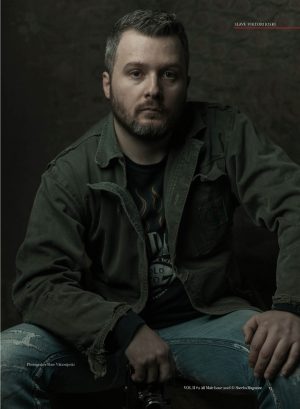 Slave, can you begin by telling us a bit about yourself and your photographic background? My name is Slave Viktorijoski and I’m professional portrait, fashion and beauty photographer, retoucher and visual artist living in Republic of Macedonia. Graduated at the Faculty of Fine Arts in Skopje, Republic of Macedonia, at the printing department, in the class of Prof -Dr. Trajce Blazhevski. I’ve always been fascinated by movies, from lighting to color grading and visual effects and always was fascinated by the depth of field effect that camera lenses create in movies that its very hard to achieve in the traditional art. After taking few snaps with friend’s DSLR I fell in love immediately and knew it was love that will last for a lifetime.
Slave, can you begin by telling us a bit about yourself and your photographic background? My name is Slave Viktorijoski and I’m professional portrait, fashion and beauty photographer, retoucher and visual artist living in Republic of Macedonia. Graduated at the Faculty of Fine Arts in Skopje, Republic of Macedonia, at the printing department, in the class of Prof -Dr. Trajce Blazhevski. I’ve always been fascinated by movies, from lighting to color grading and visual effects and always was fascinated by the depth of field effect that camera lenses create in movies that its very hard to achieve in the traditional art. After taking few snaps with friend’s DSLR I fell in love immediately and knew it was love that will last for a lifetime.
What fascinates you most about photography? The possibility to act in a blink of an eye because sometimes interesting things can happen in a small fraction of a second and if you’re fast enough you can take those moments and froze them for a lifetime. Also I like the freedom that lets you to explore with lights, colors and visual effects faster and more accurately than in any other form of art.
Slave, how would you describe your photographic style to someone who has never seen your images? Since my work is very colorful and it can vary from artistic portraits of everyday people, through portraits of musicians, singers, artists, actors, athletes to professional models, hair and make up artist, stylists and designers in few words I’ll describe my photographic style as commercial portraiture.
In your opinion, what does it take to capture emotion and expression in a portrait? Either an emotive person or very skilled actor.
When you’re working with a model, how important is communication during a shoot? Communication is very important almost in everything we do on a daily basis and so in photography too. Communication with the model will help you to bring down the model’s tension especially if it’s a person you’re working with for the first time. Also communication will help you in guiding the model through the photoshoot to perform different poses and expressions. Also It’s important the model you’re working with to have some previous experience in posing and photographing because it helps in developing better communication skills.
Where do you get your creative inspiration? Most of the time I get my creative inspiration from films, music, traditional art like painting, sculpture, print and also from following other photographers work, I love the work of Joey Lawrence (Joey L.), Mark Seliger, Nick Knight, Lara Jade also getting a lot of creative inspiration from fashion and lifestyle magazines and almost everything that surrounds me.
What is your favorite thing to shoot for yourself? Those who follow my work know that very often I’m working on my own personal projects. Those projects are very different from what I do commercially and generally are more oriented towards film and need different approach than in the commercial projects. The light is dramatic, color grading is cinematic, often times are used costumes and props and special effects like fog, snow, etc. and those portraits are very different from what I do commercially, something that’s my passion for a long time.
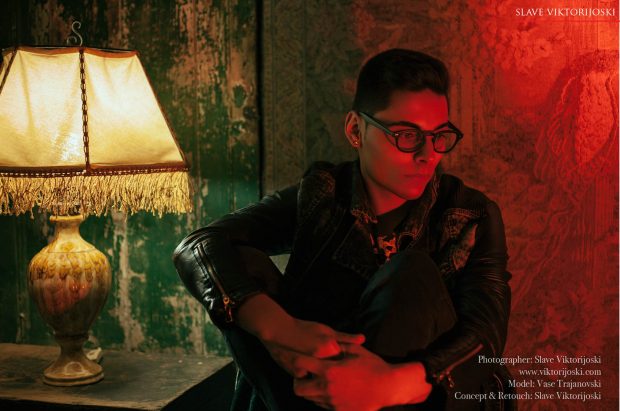
Could you take us through the typical planning process for your images? I can tell you something more about my personal projects since my commercial projects are very often determined by my clients, they choose clothes, styling, they do their make up and hairstyling or come prepared by make up and hairstyle artist right before the shoot, basically whole idea and concept very often is created by them from start to finish. On the other hand my personal projects are strictly created and controlled by me. Its a production on a larger scale and very often it takes weeks and sometimes months to find appropriate costumes and props or to build them, to find locations that match the style and feel of the shoot and to buy or rent all the necessary equipment for creating special effects like snow, fog, haze, etc. Everything starts with developing the idea inside my head and very often writing it or drawing it on paper in form of storyboard then searching for location if its not studio shoot and in the meantime collecting costumes and props. Day before the shoot we do quick costume fitting to make sure everything looks as it should and getting all the equipment ready (charging batteries, checking function of the wireless triggers, formatting memory cards, etc.) for next day’s shoot.
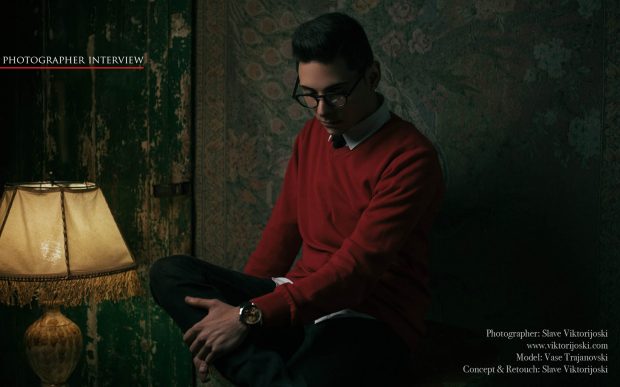 Is there something you always ask yourself/think just before you press the shutter button? I don’t think anything before I press the shutter (eventually praying all photography equipment to work as it should) until I press it and see the first pic on my laptop’s screen (since I’m shooting tethered into computer) then I’m thinking about what’s right and what needs to be moved or fixed to capture the original idea completely. Also during the shoot I’m making a checklist of what has to be fixed in post.
Is there something you always ask yourself/think just before you press the shutter button? I don’t think anything before I press the shutter (eventually praying all photography equipment to work as it should) until I press it and see the first pic on my laptop’s screen (since I’m shooting tethered into computer) then I’m thinking about what’s right and what needs to be moved or fixed to capture the original idea completely. Also during the shoot I’m making a checklist of what has to be fixed in post.
Is there one piece of equipment or prop that you cannot live without? I’ve always been passionate about vintage stuff and recently I started collecting some old wooden boxes that were used as suitcases for people to put their personal belongings while traveling and started using them in every photoshoot I do. Also they come very handy for sitting and posing the model as well as decoration on the set. Also I collect old lanterns, old wooden drawers, ladders, spinning wheels used in producing thread or yarn in the old days which I frequently use them on my personal or commercial project and I can’t imagine a shoot without them since they are becoming part of my style. From the equipment list I can’t survive on a shoot without my laptop since all of the time I’m shooting tethered into computer and my hardware color calibrator which I’m using it weekly to have consistent color calibration on all my computers and screens.
Can you tell us more about national and international exhibitions you have participated? What projects are you working on next, and what are your goals for the future? As I said earlier at the begging of the interview I’m artist (print maker, painter, sculptor) and part of the time I spend doing music and video production. As an artist I’ve participated in few international and national exhibitions:
- 2004 Veles – R.Macedonia – Graphic Circle – International Biennale in low graphics
- 2005 Uzice – Republic of Serbia – VII International Print Biennale in dry needle
- 2005 Cremona – Italy – “L’ARTE E IL TORCHIO / Art and the Printing Press”
Also I’ve participated in few group exhibitions within the faculty and outside it. Also I’m producing music record for a young and talented musician now living in the States and also a music video for one of the songs from the record, also working on some personal and commercial projects and a bit of traditional painting in the middle of everything.
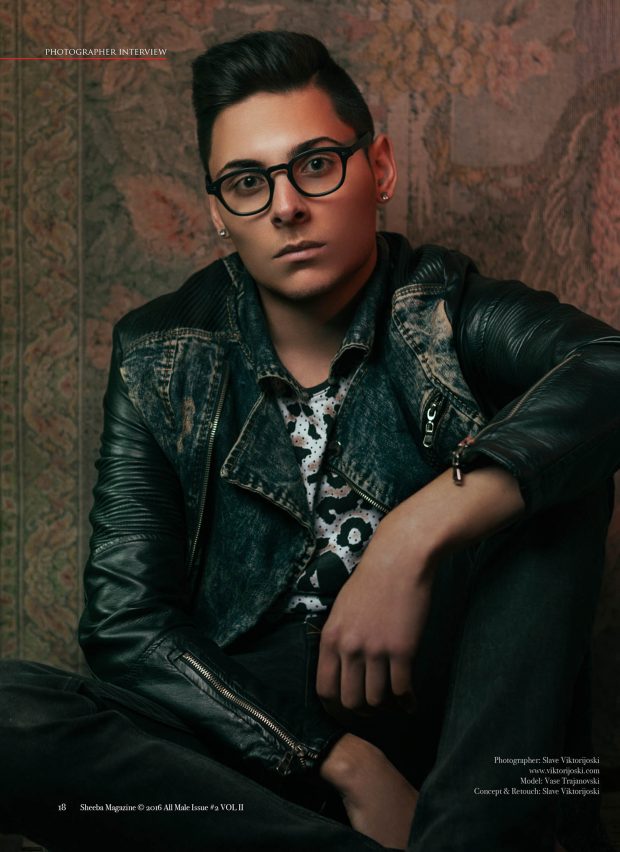 From your point of view what are the biggest challenges for an independent photographer these days? Budget. Often independent photographers finance their own projects from their own pockets. Independent photographers have to manage everything from finding a model to finding hair and make up artist from retouching to managing their work to be published on online or printed media to pricing and selling their name on the market and all that sometimes can be very painful, exhausting and frustrating but yet very challenging.
From your point of view what are the biggest challenges for an independent photographer these days? Budget. Often independent photographers finance their own projects from their own pockets. Independent photographers have to manage everything from finding a model to finding hair and make up artist from retouching to managing their work to be published on online or printed media to pricing and selling their name on the market and all that sometimes can be very painful, exhausting and frustrating but yet very challenging.
To your opinion, what role image editing programs play in today’s photography? Editing programs play big role in today’s photography. Everything we shoot ends up inside our computers passing through the editing programs. The most basic conversions and edits in the process of preparing your final work to be published online or on printed media are happening right inside the image editing programs. From raw to psd/tif conversions, 16bit to 8bit to AdobeRGB to sRGB and this is bare minimum.
Is it fair to alter reality by adjusting images in post-production? How do you feel about digital manipulation and image alteration helping photographers achieve surreal images? Depending of the style and genre, some industries require more complex themes that sometimes its not possible to be shot at once or to be done right in the camera, or for example locations that are extremely cold, hot or dangerous for a model to be brought on that place. Also artists doing levitation photography will always need to do some compositing. There are photographers that exclusively shoot for compositing. For example if you look Erik Almas’s work, 99.9% of his work is compositing and its done on highest technical and artistic level. If there’s an industry for that and if that’s the way to express your own ideas then I’m fine with that.
You bring a very high production value to your work. How much time do you spend on the final image? What aspects of photo retouching do you find the most challenging? What type of retouching is your favorite? Every retoucher, amateur or professional, knows that retouching is very time consuming process and it can take a lot of time in preparing your image for a final export. Depending on a genre and style, for example high end retouching jobs, can take hours and hours of skin cleaning and smoothing, removing stray hair, dodge and burn contouring, fixing clothes, etc. just for one pic while retouching more artistic portrait can take only few minutes. My average time spent when retouching a single photo is from 45 minutes to about an hour on fashion and beauty projects while on personal projects and artistic portraits it can take only few minutes, just to remove few blemishes or to clean some hair or dust on the clothes or off the camera sensor (if any). Since I’m using small space for shooting often times my composition goes out of the set and sometimes even a tight cropping can’t hide the stuff out of the set and extending the background of the set in some cases I find it very difficult and challenging at the same time. Beauty and portrait retouching are my favorite.
Being a professional retoucher do you have any special advice to share with beginners? First prepare yourself to spend countless hours in front of your computer while still in the learning process and later in your career as professional retoucher. Second be prepared to work under pressure to meet the deadlines because photography industry is one big world of collaborations between photographers, models, make up and hair artists, creative directors, magazines and everyone is waiting for their images. Third watch as many retouching videos and video courses and learn the fundamentals of the retouching. Fourth buy comfortable chair and pressure sensitive pen and touch tablet as soon as possible in the early stages of your learning process. It will give you more control and it will speed up your workflow and last fifth advice I would like to give to the beginners who want to start their carrier as professional retouchers is LESS IS MORE. By this I mean that it’s very easy to go too far with skin softening, dodging and burning or eyeballs or teeth whitening in the early stages of learning process.
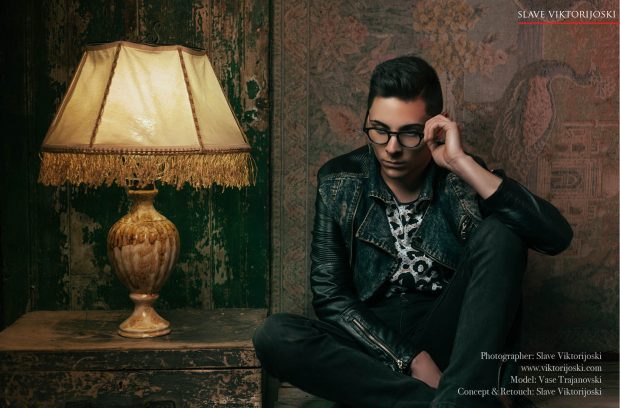
On your website we can see a number of male portraits. From your own experience, what is the fundamental difference between a workflow of shooting female models vs. male models? There’s a big difference when working with male models vs. when working with female models. Basically what makes them different by nature makes the difference in workflow when shooting male vs. female models. Male models tend to put accent on their masculinity posing to look strong, fit and tall while oozing coolness, confidence and self control while females tend to pose to express their femininity and to look pretty, cute, or showing off their nice hourglass body. When posing female models we try to accentuate their body curves while male’s body is not about curves, it’s about angles and raw power, about the V and the jaw line.
What do you hope people take away from viewing your images? Is there a particular message you would like to get across to the viewers? There’s is no particular message I would like to send to the viewers other than every person has his/her own flaws and virtues, every person has its own inner and outer beauty and every person has his/her own future and past. I like to show that to my viewers and make them accept everyone and everything around them and also to accept their selves.
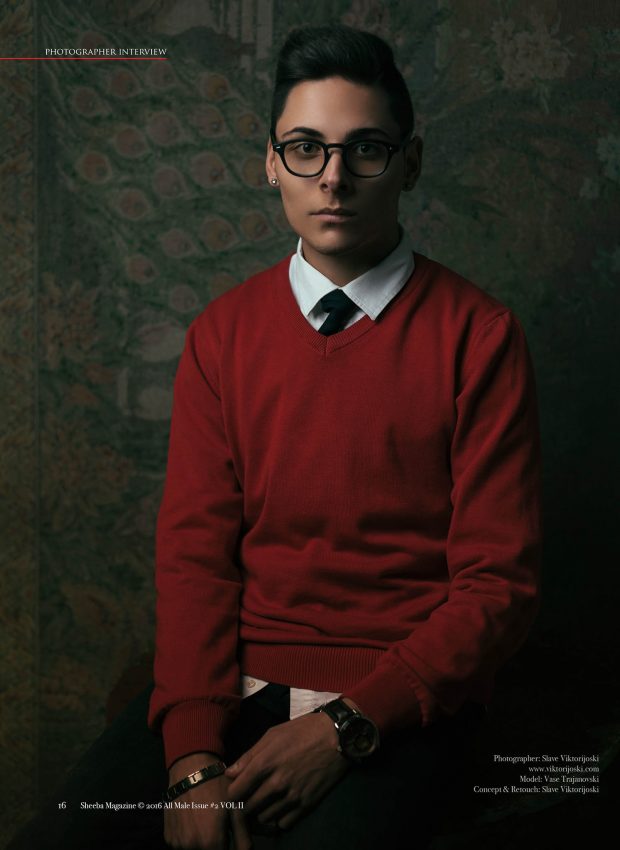 What does “beauty” mean to you? I think that this is the trickiest question in the whole world to be answered since beauty like everything else in life is matter of personal taste and also everyone tend to define and manifest the beauty differently. Some people prefer inner beauty others outer beauty. Either inner or outer beauty is magic. It can blind your eyes, twist your mind and melt your heart. Be careful! 🙂
What does “beauty” mean to you? I think that this is the trickiest question in the whole world to be answered since beauty like everything else in life is matter of personal taste and also everyone tend to define and manifest the beauty differently. Some people prefer inner beauty others outer beauty. Either inner or outer beauty is magic. It can blind your eyes, twist your mind and melt your heart. Be careful! 🙂
Slave, what from your point of view makes the shoot successful? If it’s a personal project then how close I am to the final idea and if it’s commercial project then how close is the client to their final idea. In both cases its very important to me everyone participating in the personal or commercial projects to be satisfied and if the client is satisfied then I can say the shoot was successful.
If you could tell yourself anything when you first started out, what would you say? I don’t think I would like to say anything other than to be more prepared to face the industry since there are bigger ups and downs especially nowadays when almost everyone is owning some kind of photographing device and own facebook, twitter, instagram space where he can put their own stuff and calls him a photographer and also would like to say to my self to be more patient and to believe more in myself. Other than that I think I’ve made all the right decisions so far and stayed enough passionate and motivated to be still in this game.
Where can we hear more from you or see more of your work? My official webpage is at: www.viktorijoski.com. My official Facebook page is at: Slave Viktorijoski Photography
What do you usually do on your free time? Almost all of my free time I spend on planning personal and commercial projects and if I’m not doing photography then either I’m painting, drawing or producing music or shooting and editing video. That little time that is left I spend on go outs with friends.
Tell us one surprising fact about you. Sometimes I take art too seriously!
Thank you, Slave.
Published February 2016 All Male Volume II: BUY NOW

